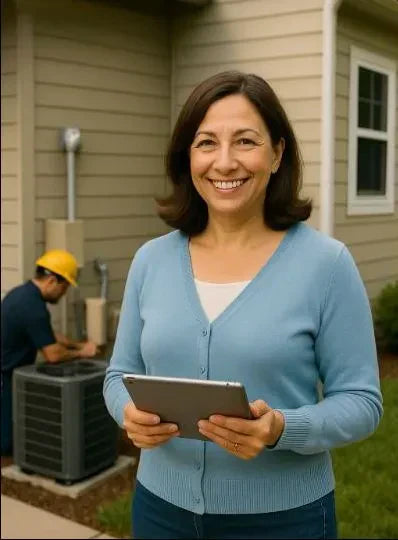How Regulations & Incentives Affect R-32 Usage
Why Rules Shape What’s in Your AC
When you buy an air conditioner, you’re not just choosing a piece of equipment—you’re stepping into a world shaped by global climate agreements, federal laws, and even local utility programs. The refrigerant inside—R-32—isn’t there by accident. It’s there because regulations and incentives are reshaping the HVAC industry.
If you’ve heard that R-22 was phased out, R-410A is on its way out, and R-32 is the “future,” you’re right. But the “why” comes down to environmental rules and financial nudges designed to push us toward greener, more efficient cooling.
Let’s unpack how policies, incentives, and global agreements are driving the shift to R-32—and what it means for you as a homeowner.
The Global Push: From Montreal to Kigali
The refrigerant story starts with the Montreal Protocol in 1987, which phased out ozone-depleting refrigerants like R-22.
Then came the Kigali Amendment (2016), which targeted high global warming potential (GWP) refrigerants like R-410A. Countries agreed to phase down HFCs, creating the path for lower-GWP options like R-32.
The United Nations Environment Programme (UNEP) notes that global adoption of Kigali could avoid up to 0.4°C of warming by the end of the century (UNEP – Kigali Amendment).
U.S. Policy: The AIM Act
In the U.S., the American Innovation and Manufacturing (AIM) Act is the key driver. Signed into law in 2020, it requires:
-
An 85% reduction in HFCs by 2036.
-
Support for alternatives like R-32 and R-454B.
The U.S. Environmental Protection Agency (EPA) explains how the AIM Act sets timelines for manufacturers and contractors, making R-32 one of the most widely adopted solutions (EPA – AIM Act).
Energy Efficiency Regulations
It’s not just refrigerants—efficiency standards matter too.
-
In 2023, the DOE rolled out SEER2 standards, making efficiency testing more realistic.
-
High-efficiency R-32 systems help homeowners meet these tougher standards.
For most households, these new rules apply directly to air conditioners and air handler systems, since both components must meet performance standards when tested together.
The Lawrence Berkeley National Lab (LBNL) shows that stronger efficiency standards save billions in consumer energy costs while reducing emissions (LBNL – Appliance Standards).
Incentives for Homeowners
Switching to an R-32 system doesn’t just make regulators happy—it can make your wallet happy too.
-
Federal Tax Credits: Under the Inflation Reduction Act, homeowners can claim credits for high-efficiency heat pumps and ACs that meet SEER2 thresholds.
-
Utility Rebates: Many local utilities offer $300–$1,000 back for upgrading to high-efficiency systems.
-
State Programs: States like California and New York offer additional rebates for low-GWP refrigerants.
The Database of State Incentives for Renewables & Efficiency (DSIRE) is the most comprehensive source for local rebate opportunities (N.C. Clean Energy Technology Center – DSIRE).
The International Perspective
R-32 isn’t just a U.S. story—it’s already mainstream in many regions.
-
Japan & Europe: R-32 has been widely adopted since 2013.
-
India & Southeast Asia: Rapid uptake due to government support.
A study in the International Journal of Refrigeration highlights that R-32 reduces both GWP and lifecycle costs compared to R-410A in diverse climates (ScienceDirect – Int. J. Refrigeration).
Barriers and Challenges
Of course, no transition is seamless. Some challenges include:
-
Technician Training: R-32 is mildly flammable (A2L), requiring new safety training.
-
Cost Premiums: New systems can be 5–15% more expensive upfront.
-
Consumer Awareness: Many homeowners still aren’t familiar with refrigerant types.
The International Energy Agency (IEA) stresses that policy success depends on technician training and consumer awareness programs (IEA – Cooling Policies).
The Future: What Homeowners Should Expect
Over the next decade, R-32 will dominate as the standard for residential systems in the U.S. and abroad. For homeowners, that means:
-
Future-proof investment – systems designed for compliance.
-
Ongoing rebates and credits – incentives that make upgrades affordable.
-
Better performance – high efficiency under real-world conditions.
By choosing an R-32 AC + Air Handler System today, you’re aligning your home with both current laws and future regulations—and enjoying financial perks along the way.







